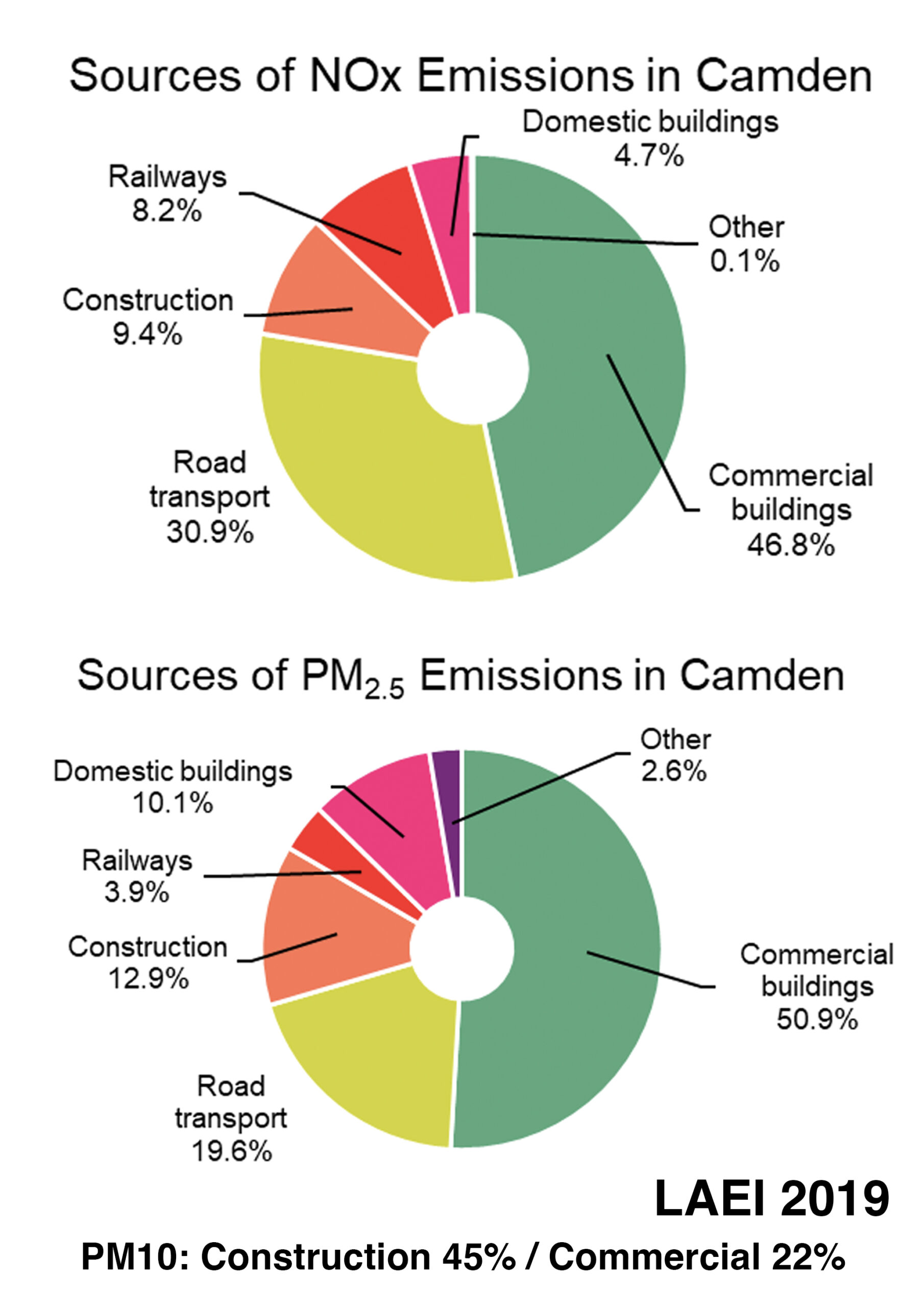In Camden, the single biggest source of gaseous and particulate pollution is ‘commercial buildings’.
Do you know about the causes of your local air pollution?
There are so many sorts of commercial buildings where you might be working – but lets pick out three:
– Office / desk work
– Construction
– Restaurants, especially meat cooking
Of course, if you work outside your home, you’ll travel to get there – please check out the travel ideas.
A. Office/desk work:
Poor air quality in workplaces can have a significant negative impact on the functioning of employees, with worse productivity from poorer focus and slower response times:
‘In an average size meeting room without adequate ventilation, three people can cause CO2 to reach a level that affects their cognitive function in just 45 minutes.’
Your employers control the air you breathe – what are they doing about it?
– Aircon? Other ventilation? Windows?
– Active monitoring?
Work absences related to poor air causing poor health are costing Britain about £600m a year.
B. Construction:
Construction obviously creates:
– Dust nuisance – 45% of PM10 – and substantial amounts of PM2.5 and NOx too;
– Transport of construction materials and machinery;
– Emissions from machinery during construction.
Maybe more importantly, construction:
– is often preceded by dusty / waste producing / carbon-releasing demolition;
– creates buildings which are lived in / worked in for many years or decades. Are the buildings sustainable – in terms of insulation, heating and lighting;
– all the buildings create heat islands – which make air pollution worse.
PM10 pollution from construction is proportionately increasing:

C. Restaurants, especially cooking meat
Some cooking fuels – charcoal and wood – and some cooking methods – grills and pizza ovens – produce smoke during combustion. PM are also produced where oils and fats are heated; this is especially problematic where foods are in direct contact with hot surfaces (e.g. teppenyaki grilling, griddle pans, charcoal grills etc.), and in situations where lots of oil is used (e.g. deep-fat frying).
More PM is produced from foods with a higher fat content like meats (which also often emit VOCs when cooked).
Many of the grilling restaurants focus on meat – so the combination of fuel + method + food leads to a lot of pollution.
Kitchen practices are also important. Additional pollution is produced when foods burn, when cooking surfaces aren’t cleaned properly, when oils with too low a smoking point are used, or when marinades and sauces are allowed to drip onto cooking surfaces, like charcoal).
Which all means grill restaurants, wood-fired pizza, and fast food/deep-fat frying kitchens contribute proportionally more to air pollution.
(With thanks to Tom Parkes, Camden air quality)
SO WHAT TO DO?
Ask the air quality lead in your local area for local information about causes of your local pollution.
What are they doing about this? What have they already done – what effects did it have?
If your employer uses aircon, are they using green energy? if not, why not?
Have they done any air quality monitoring? What changes have they made following monitoring?
Ideas for reducing pollution from construction sites are summarised here, but include:
– ensure compliance with existing legislation
– encourage adoption of low emission approaches
– develop a pathway to enhanced regulation
Is the demolition / construction really the best thing to be done for this location?
How sustainable is it – especially in the long-term?
Are you good at writing responses / hassling officials – perhaps especially if you work in an office? Please check out the activism ideas.
